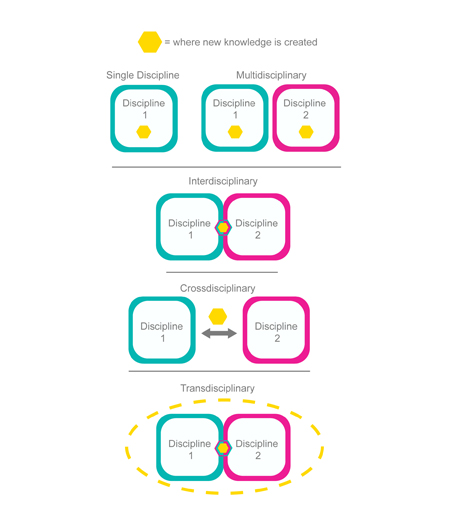2 Which definition should I use?
Figure 2 shows the wider range of definitions that are used to describe studying more than one subject, each of these has their own place in different circumstances. There are benefits (and challenges) in applying the knowledge and skills gained from more than one subject. You’ll cover these in more detail in the following sections.
Now complete Activity 1 to consolidate your understanding.
Activity 1 Defining multidisciplinary and interdisciplinary learning
In your own words, write down what you have understood by the terms ‘multidisciplinary’ and ‘interdisciplinary’ learning.
Discussion
You might have thought of something along these lines:
Multidisciplinarity is where two or more academic disciplines collaborate for a specific purpose, for instance, when computer scientists, psychologists and sociologists cooperate in the design of human/computer interfaces.
Interdisciplinarity differs from multidisciplinarity because the different disciplines work together to produce new knowledge and understanding.

